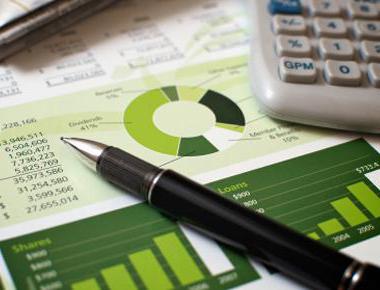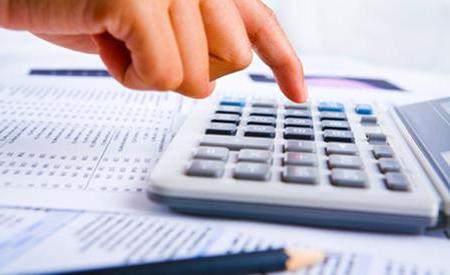Working capital in the balance sheet represents the advanced amount in the complex of material assets of the company, designed to service the business process. They are fully used during one production and commercial (operational) cycle. Let us further consider how the calculation of working capital on the balance sheet is carried out.

General information
Working capital in the balance sheet is necessary for the planned formation and use of production assets in the minimum necessary volume. With their help, the company ensures the implementation of the established program in a certain period. Production assets include:
- raw materials;
- additional and basic materials;
- tara;
- fuel;
- semi-finished products;
- repair parts;
- wearing and low value objects;
- incomplete production;
- semi-finished products manufactured by the enterprise;
- costs of upcoming periods.
Working capital also includes circulation funds. They include:
- residues of finished products in warehouses;
- products shipped but not paid by customers;
- balances in accounts receivable, cash desk, current bank account, in calculations, invested in securities (short-term) securities.
These funds are constantly on the move. They ensure the continuity of the turnover of funds. During this process, there are regular and constant changes in the forms of advanced cost. From money it becomes commodity, then production, then again commodity and again monetary.

Value
Working capital in the balance sheet plays a key production role. Their importance consists in advance financing of expenses in the minimum necessary volumes for the formation of prerequisites for the release of new products. They also contribute to the formation of the estimated economic result of the enterprise.
Fundamental principles
The process of establishing the necessary composition and structure of these assets, determining their sources, their needs, as well as ensuring control over the efficiency of their use and safety is the organization of working capital. It is based on the following principles:
- the formation of a minimum number of current assets to ensure the continuity of the production process and circulation;
- effective use;
- rational distribution of assets at the disposal of the enterprise in the areas of the production process;
- formation and replenishment of assets at the expense of own and borrowed money in accordance with the volume of output;
- formation of financial reserves;
- control over the safety and rational use of funds.

Classification
Working capital varies in the financial features of their education. They can be gross and clean. The first group includes all current assets, regardless of sources. The net include the difference between the gross aggregate of assets and the total short-term (current) liabilities. This capital is presented as working capital. In the balance sheet under normal conditions of activity of business entities, the size of current assets is greater than short-term liabilities. This means, in other words, that payables do not exceed their amount. For participation in the circuit, funds are divided into advances to production assets or circulation funds. There is also a classification according to the sources of formation. So, assets are divided into attracted, borrowed and own working capital.In the balance sheet, the latter assesses both the efficiency of using OK and the effectiveness of production. These assets are constantly present in the enterprise. They have not set a period of use. In this case, their actual presence at the enterprise is of particular importance.

Own working capital: balance formula
As a rule, the determination of SOS is carried out by subtracting current liabilities from assets. Order of the Federal Bankruptcy (Insolvency) Administration dated August 12, 1994 No. 31-r, explaining the Methodological Provisions for assessing the financial situation of an enterprise and establishing an unsatisfactory reporting structure, regulates the procedure in accordance with which working capital is determined. The balance formula is as follows:
- SOS = p. 490 - p. 190.
Given the changes introduced after 2011, the equation will be as follows:
- Own working capital in the balance sheet = line 1200 - p. 1500.
In addition to this equation, there is another option. In accordance with it, current assets in the balance sheet is line 1300, summarized from page 1530, minus page 1100.
Methodical approaches
Their existence is due to the unregulated placement of working capital and the sources of its formation. Among the most common methodological approaches are the following:

- Working capital in the balance sheet is the line of total of section 2, summarized with deferred expenses minus the sum of total of section 4 and income of upcoming periods. According to this option, it is proposed to add to the assets that are reflected in Sec. 3, and subtract from them the indicators of Sec. 4, as well as current liabilities.
- Working capital in the balance sheet can also be represented as the difference between the amounts of the total of section 2 of the asset with the expenses of the coming periods and the total of sec. 3 liabilities with the result of Sec. 4 and deferred income. In this case, all costs and revenues of the following periods are taken into account. If there are long-term loans, they should also be included in the calculations, as they are also intended for capital investments.
- Own working capital in the balance sheet is the result line in Sec. 1 liability "Equity" + indicator sec. 2 "Securing upcoming payments and expenses" - "Non-asset."
- According to the following approach, it is proposed to subtract from the amount of upcoming expenses and payments, deferred income is required. assets. Thus, SOS = total according to Sec. 1 + result sec. 2 + result of sec. 3 - indicator sec. 1 asset.
- In accordance with this option, the sum of the values of sections I and II are added long term duties, and then deductible non-current assets.

Reasons for shortage / marriage of SOS
The main factors causing this state of working capital include:
- unsatisfactory activity of the marketing department;
- failure to receive estimated income;
- low degree of responsibility of the enterprise in solving the issue of formation and saving of working capital, their misuse;
- lack of timeliness in financing the growth of the standard for SOS;
- presence of unreasonable receivables; they arise when the calculation is untimely, for example;
- a significant increase in prices.
Excess sos
The surplus of current assets at the enterprise is created as a result of the excess of funds over established standards, which are necessary to meet the existing constantly minimum production needs in terms of resource supply. The reasons for the formation of excess SOS include:
- excess of profits earned in fact over the revenues provided for in the plan;
- incomplete deduction of budgetary payments and contributions to trust state funds;
- free receipt of inventory items from other enterprises;
- insufficiently complete distribution of profits for other purposes provided for in the financial plan and so on.

The surplus of working capital at the enterprise indicates that part of the company's assets is inactive, does not bring any income. Lack of SOS, in turn, slows down the production process. The deficit reduces the speed of economic circulation of the enterprise.
